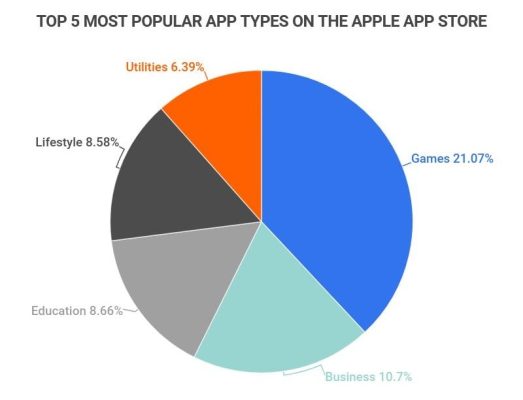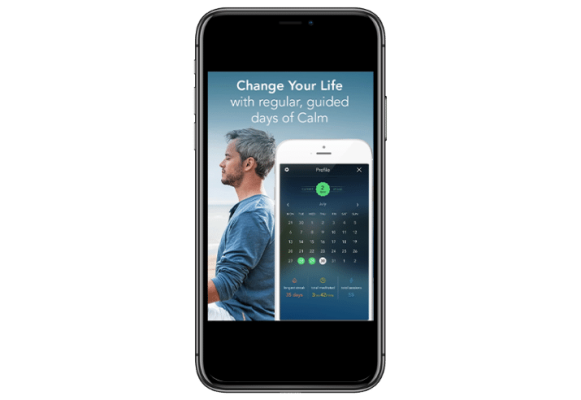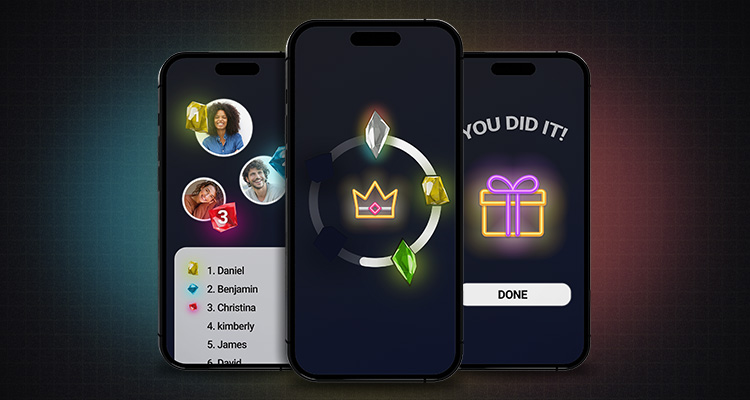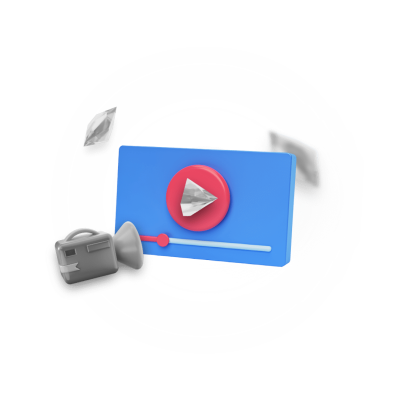9 Steps to Crafting a Winning App Marketing Plan

In today’s competitive and crowded mobile app marketplace, the success of your app can no longer solely depend on its functionality and design. With over 3 million apps available on the Play Store and 2 million on the App Store as of 2023, it’s no wonder that only 0.5% end up becoming successful.
So, how can you ensure that your app rises to the top of the charts?
The answer is quite simple. Like in many other aspects of life – you need a plan.
- A well-crafted app marketing plan can boost user engagement, increase visibility and downloads, and skyrocket your brand into category leadership.
In this guide, we’ll delve into the step-by-step process of how to make a mobile app marketing plan for 2024 that not only resonates with your target audience, but also maximizes your app’s potential in the market.
From understanding the current app landscape to setting precise marketing goals, and from identifying your audience to choosing the right marketing mix, each step is a building block towards creating a campaign that not only captures attention but sustains user engagement and growth.
How to Create an Effective Mobile App Marketing Plan
Before diving into the process of developing your app marketing strategy, it’s crucial to highlight the significance of establishing a solid marketing plan before acquiring your initial users. This proactive approach ensures that there’s already existing demand when you launch your app.
Nevertheless, even if your app has already been launched, you can still leverage most of these steps to enhance user engagement and drive greater downloads.
So, let’s explore the essential steps for crafting an effective app marketing strategy that will set you up for success.
1. Market & Category Research
As of 2024, mobile apps are projected to generate over $935 billion in revenue, demonstrating the significant growth and potential in this market.
Each app category has its own set of challenges and competitors, so it’s important to begin your app marketing plan with thorough market research, understanding both your ideal users and competitors.

Conduct a competitor analysis to learn what your competitors are doing well and where they fall short, considering factors like App Store rankings, Play Store rankings, user experience, monetization model, ratings, and reviews. You can use app analytics platforms to understand user demographics, behavior, and preferences.
Looking to Get the Most out of Your App Marketing Strategy?
Our team of mobile experts is here to help!
2. Identify and Understand Your Target Audience
A well-crafted mobile app marketing plan necessitates thoroughly comprehending its target users. Even before your product is ready for launch, it is crucial to identify and classify potential users into distinct groups. This approach will pave the way for effective targeting and engagement, maximizing the chances of success for your app.
Segmenting your user base lays the foundation for creating detailed customer personas, each representing a unique user journey.
- This process is not just about demographics; it’s about grasping what your customers expect and how they perceive your brand.
Instead of solely emphasizing product features and relying on chance, try to establish an emotional connection with your users.
- To gain deeper behavioral insights, consider leveraging behavioral analytics tools like Apple’s Peer Group Benchmarks or conducting user surveys.
These tools can help you understand how users interact with similar apps, providing valuable data on features and content that resonate with your target audience.
For instance, by analyzing user interaction patterns, you can identify which app functionalities are most used and appreciated or which marketing messages elicit the strongest responses.
Finally, craft your user profiles to understand their preferences, hobbies, locations, and occupations to encourage long-lasting interactions with your app.
Calm – A Case Study for Understanding User Behavior
Let’s take the example of “Calm,” a popular meditation app. With the increasing trend in mindfulness and meditation apps, Calm had to stand out among the competition on its app store page.

In order to improve their ranking in the Apple App Store’s Health & Fitness category and increase discoverability and organic downloads, Calm had to analyze user behavior to craft the perfect app assets that tell a story about what the app is all about.
Through Moburst’s in-depth keyword research and comprehensive ASO strategy, Calm was propelled into the top 10 in the Health and Fitness category.
- The number of keywords ranked in the top 15 positions soared by 684%. Calm’s organic installs grew by 36% within 6 months, and the cumulative traffic rose by an impressive 521%.
By understanding its target audience’s need for easy-to-use and accessible mindfulness practices, Calm tailored its content to suit busy lifestyles and varying levels of meditation experience.
3. Set Up Your App Assets
Creating strong and relevant app assets is essential to increasing downloads and setting your brand up for long-term success.
Before diving into the excitement of building hype for your app, it’s crucial to ensure that each of your app assets is finely tuned for maximum visibility and conversion.
Optimize Your App’s Website with SEO
While it may seem counter-intuitive to include a website in a marketing plan for mobile apps, your app’s website is quite often the first point of interaction for potential users. Here’s how to optimize it for success using SEO:
- Keyword Research: Identify keywords that your target audience is searching for. Use these keywords strategically in your website’s content, titles, meta descriptions, and URLs.
- Content Creation: Develop high-quality, informative, and engaging content that addresses your audience’s needs and questions. This could include blog posts, FAQs, how-to guides, and user testimonials.

- Mobile Responsiveness: Ensure that your website is mobile-friendly, as a significant portion of your audience will likely visit it on their mobile devices.
- Page Load Speed: Optimize your website’s loading speed, as slow load times can negatively impact user experience and SEO rankings.
- Backlink Strategy: Build a robust backlink profile by getting other reputable websites to link to your site. This increases your site’s authority and improves its search engine ranking.
Want to Maximize Your App’s Visibility and Increase Downloads?
Our team of mobile experts is here to help!
Set Up Your App Listing with ASO
Your app store listing is where users decide whether to download your app. Optimize it with ASO:
- Title and Description: Include relevant keywords in your app’s title and description. Make sure they are compelling and clearly convey your app’s value proposition.
- Visuals: Use high-quality app screenshots and videos that showcase the best features of your app. Visuals play a crucial role in user decision-making.

- Ratings and Reviews: Encourage users to rate and review your app. High ratings and positive reviews can significantly improve your app’s visibility and credibility.
- Regular Updates: Keep your app updated. Regular updates signal to the app stores that your app is being actively maintained, which can improve its ranking.
Enhance User Experience with CRO
Conversion Rate Optimization (CRO) is all about turning visitors into users:
- User-Friendly Design: Ensure that your website and app store listing is easy to navigate, with clear calls-to-action (CTA).
- A/B Testing: Regularly test different elements of your website and app listing, like CTAs, images, and descriptions, to see what resonates best with your audience. For instance, testing different app screenshot designs can lead to a significant increase in conversion rates.
- Analytics: Use analytics tools to track user behavior on your website and app listing. This data will help you make informed decisions about what to optimize.
By methodically optimizing each asset – your website through SEO, your app listing through ASO, and user experience through CRO – you set a strong foundation for your app’s online presence.
This strategic groundwork not only enhances visibility but also improves the likelihood of conversion, paving the way for the successful building of hype and long-term engagement in the subsequent phase of your marketing plan.
4. Develop Your Online Presence
After successfully setting up your app’s assets, it’s time to promote it to potential users.
Creating a strong online presence is essential to increasing visibility and setting your app up for long-term success.
- Consider developing website content or a landing page with teaser videos and engaging screenshots to showcase your app before or during its launch phase. You can even include a countdown clock to the launch of your app to boost conversions.
- Incorporating a blog with an email list sign-up form can also be effective for early engagement.
- Content marketing is another key pillar, where guest blogging on high-authority sites can amplify reach, generate backlinks, and improve search engine rankings. Try finding websites with high domain authority in your industry to ensure you’re reaching the right audience.
- Email marketing, known for its high ROI, can also play a significant role in nurturing and growing your app’s audience. You can set up a monthly newsletter discussing your app’s latest features and use it to announce upcoming events and promotions.
Need Help Optimizing Your App Assets for Success?
Our team of mobile experts is here to help you grow!
5. Optimize for Acquisition and Visibility
Focus on app store optimization (ASO) to improve your app’s visibility. Optimize your app listing with relevant keywords, appealing visuals, and explainer videos.
- Remember that each app store has its specific guidelines and that each algorithm favors different types of content. You can read all about these in our Play Store ranking factors and App Store ranking factors guides.
- To encourage users to pre-download your app and stimulate interest, consider implementing exclusive pre-order discounts for both the app itself and its in-app purchases. You can easily set up enticing sign-up rewards through the Google Play Console and the App Store Connect and track their performance.
- App localization and internalization can also have a huge impact on enhancing global reach and visibility.
6. Create a Post-Launch App Marketing Plan
Planning ahead is rarely a bad tactic, and this definitely holds true when it comes to marketing your app. Being prepared by having a post-launch app marketing plan allows you to have time to build up your campaign, gain insights from the pre-launch phase, and adapt accordingly.

Focus on Retention Strategies
Did you know that only 4% of users remain active on the app four weeks after installation? This means retention is key to the long-term success and profitability of your app.
Focus on the following user retention strategies to keep users engaged and loyal to your app:
- Simplifying Onboarding: A user-friendly app onboarding process can significantly reduce initial user drop-offs. An intuitive and helpful introduction to your app can make a lasting impression.
- Encourage and Facilitate User Feedback: This not only provides valuable insights for improvement but also makes users feel valued and heard, which can increase their engagement with your app.
- Effective Push Notifications: Utilize push notifications to keep your users coming back. Notifications about new features, updates, or special offers can be a great way to encourage users to keep engaging with your app.
- App Gamification: Level up your app experience by adding exciting elements like daily logins for users to rack up points and unlock in-app rewards and discounts. You can also introduce a community leaderboard where users can showcase their achievements, fueling healthy competition and promoting the FOMO factor.

7. Utilize Burst Campaigns
Burst campaigns can be a potent element in your app marketing plan, especially when aiming for a swift and impactful increase in user acquisition.
- These campaigns involve a concentrated marketing effort over a short period (24-72 hours), blending various elements like organic marketing, paid ads, influencer marketing, and special offers for a multi-faceted impact.
This blend can quickly boost your app’s visibility in app stores and on social media platforms.
Here are some quick tips to get you started with mobile burst campaigns:
Leverage Paid Ads
Utilize paid advertising across platforms like Google Ads, Facebook, Instagram, and TikTok. These ads should be well-targeted to your audience and designed to capture attention promptly.
Special Offers and Discounts
Introduce time-sensitive offers or discounts exclusive to the burst campaign period. This strategy can create a sense of urgency, encouraging quick downloads and engagement.

Influencer Partnerships
Collaborate with influencers for a wider reach. Influencers can create authentic content that resonates with their audience, bringing a surge of new users to your app.
Video Marketing
Video is (still) king in 2024. Incorporate video marketing into your burst campaigns. Short and engaging videos can effectively capture user interest and are highly shareable.
Implementing burst campaigns for your app marketing plan can lead to a rapid increase in your app’s user base and significantly enhance its visibility in a crowded marketplace.
8. Promote Special Initiatives
Consider pitching your app to app store editors for featured placements and engaging in awards and contests to enhance visibility and credibility.
- Look for opportunities to promote your app on different platforms using influencer collaborations, UGC (user-generated content), and more. These can help boost engagement significantly and increase traffic to your app listing.
- Take advantage of special dates and events, such as the holiday season or a category-related event, by using in-app events on the App Store and promotional content on the Play Store. You can offer your users special discounts and enhance engagements this way.

9. Continuously Test, Improve, and Adapt
Always be open to adapting your strategies based on market feedback and changes.
- Continuously measure performance using key metrics and adjust your strategies accordingly. These could be the uninstall rate, CPI (Cost-per-install), conversion rate, and more.
- Keep your app assets, such as your app screenshots, metadata, and preview videos, up-to-date with the latest features and app store trends.
- Create a feedback loop where you gather user opinions and suggestions and incorporate them into your app. This not only improves the app but also builds a loyal user base.
Ready to Achieve Mobile Hypergrowth?
Our team of mobile experts is here to help!
Key Takeaways
Crafting a winning app marketing plan is a dynamic and continuous process that requires a deep understanding of the market, a solid strategy, and the agility to adapt to changing circumstances. By following this guide, you can significantly increase the chances of your app’s success in the competitive mobile app market.
For expert assistance in navigating this complex landscape and maximizing your app’s potential, consider partnering with a professional app marketing agency. With their expertise and experience, you can take your app to new heights, ensuring it not only captures but also sustains user engagement and growth.
Remember, the journey of app marketing is an ongoing one, so keep testing, learning, and evolving to stay ahead in the game.






